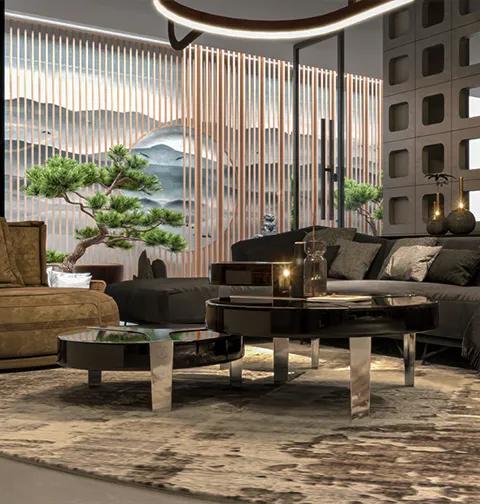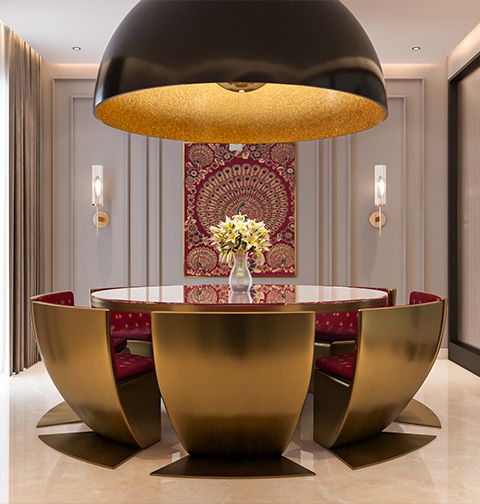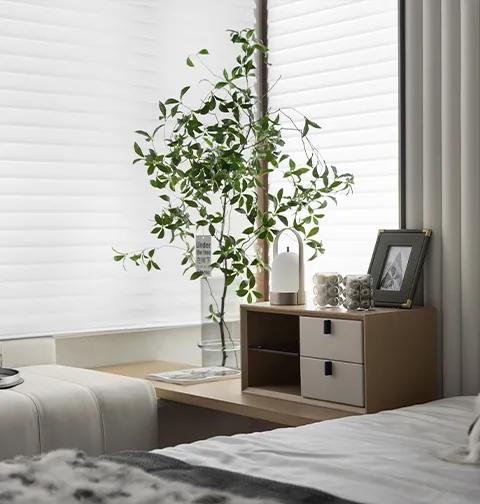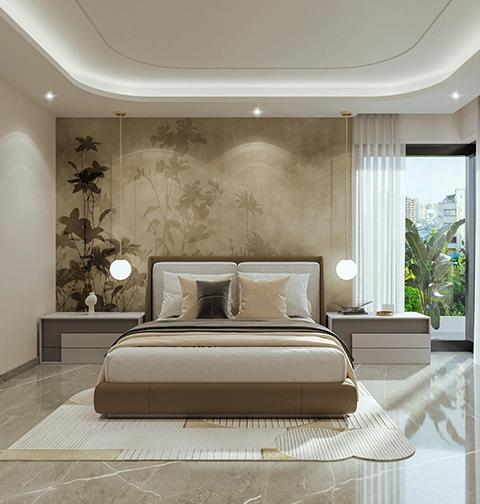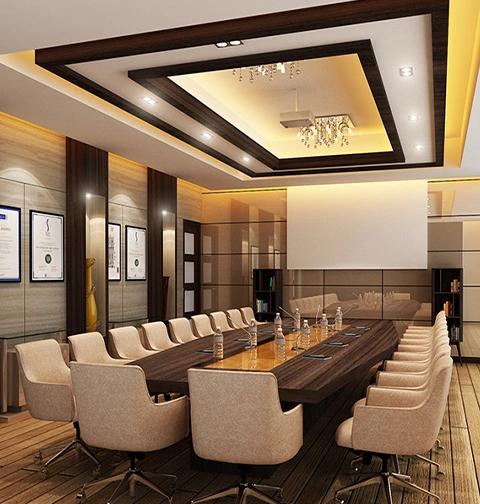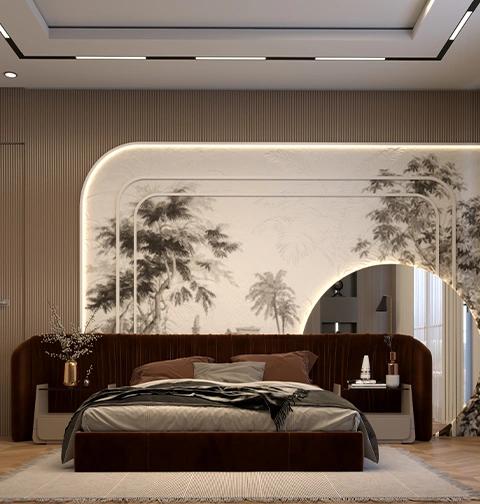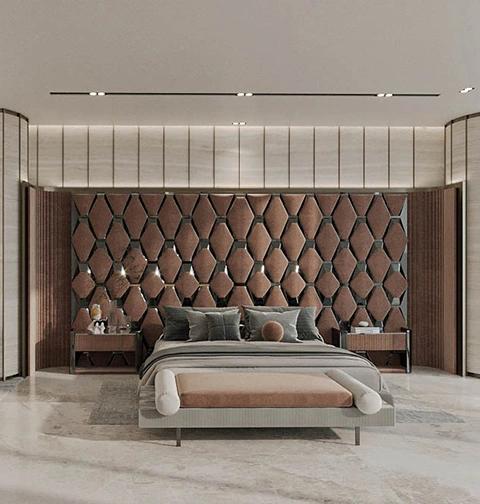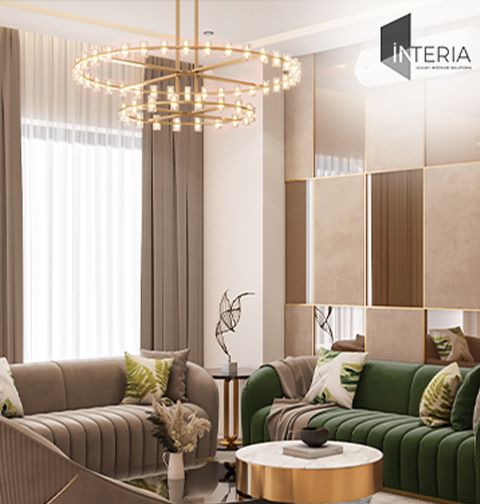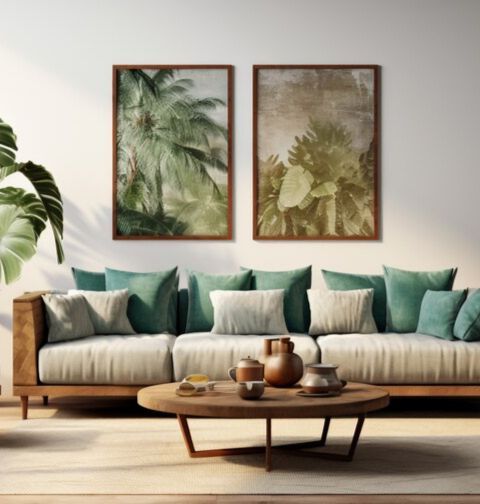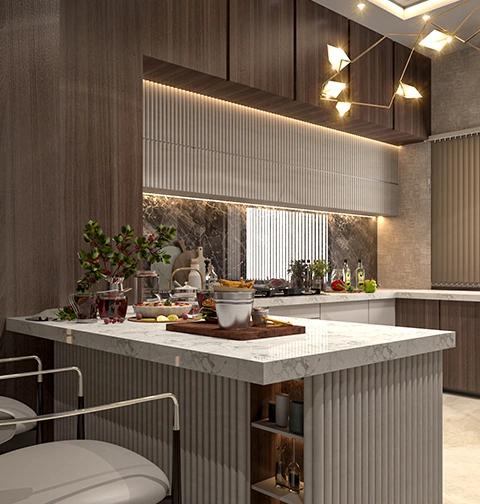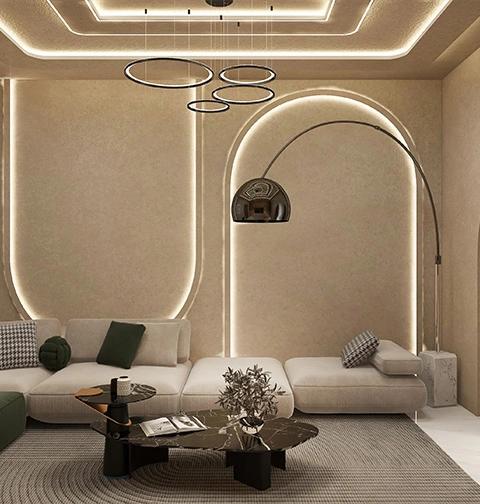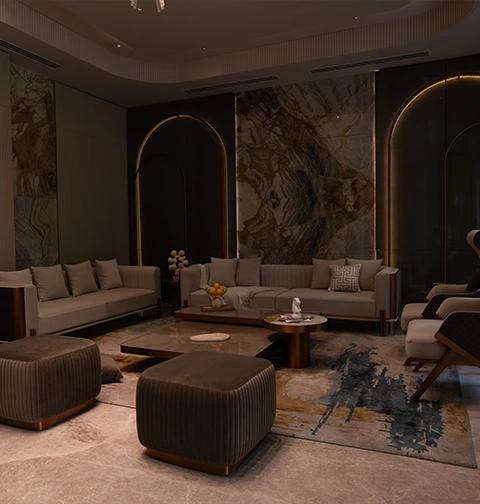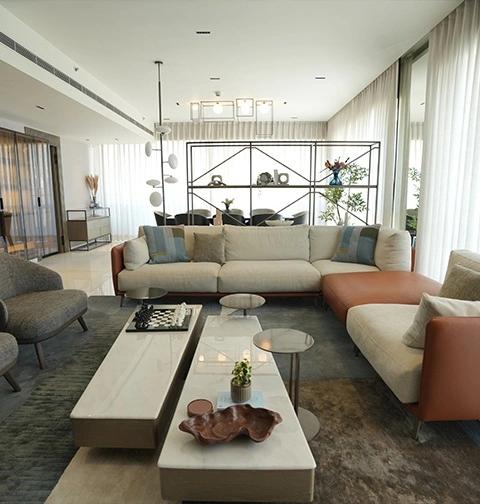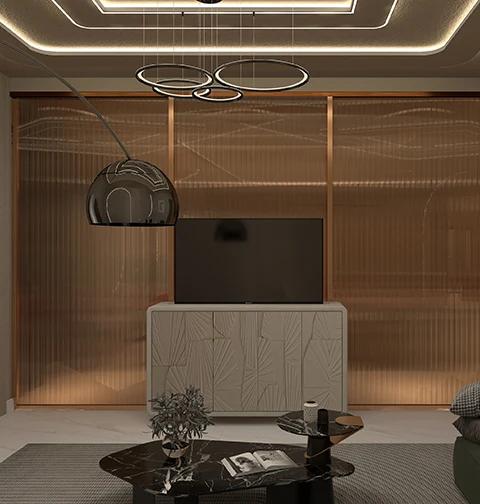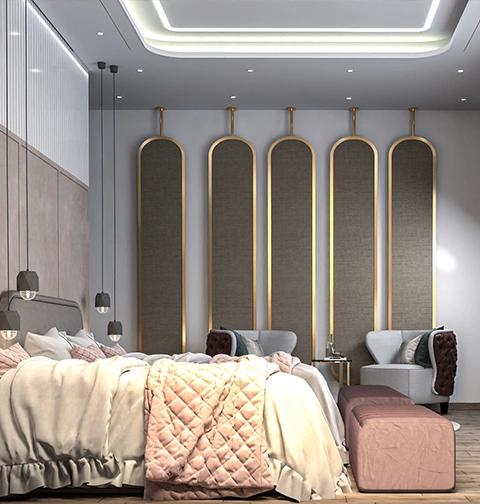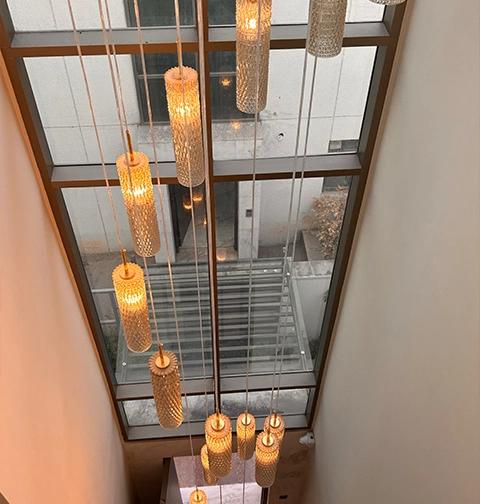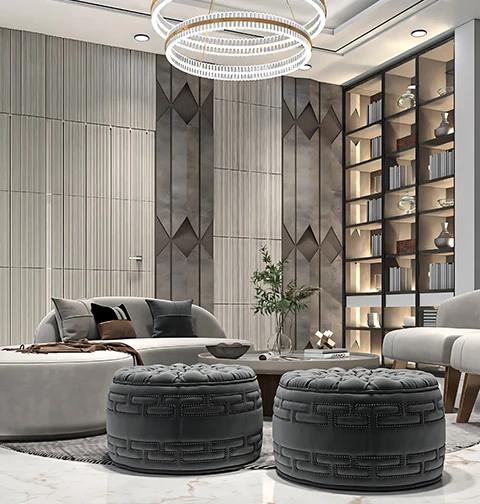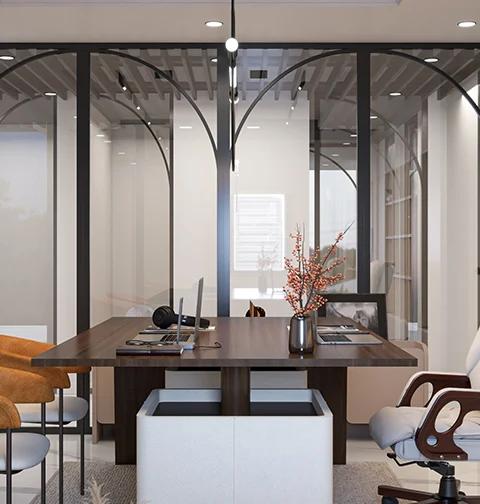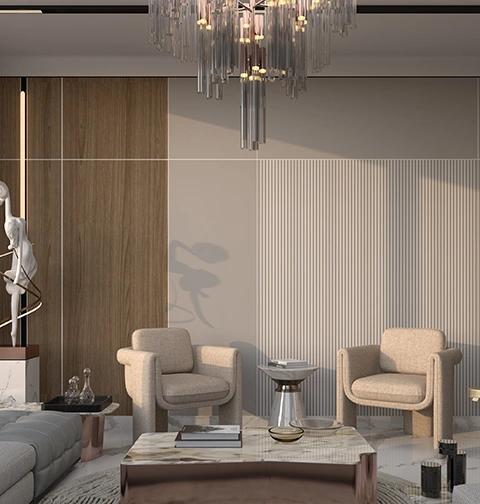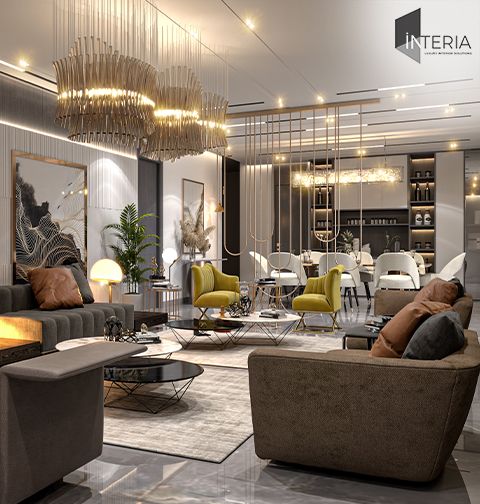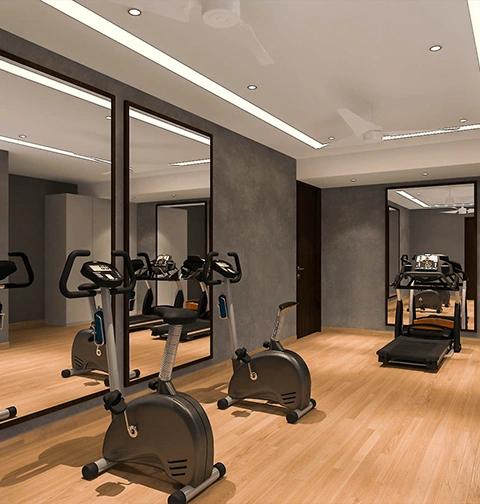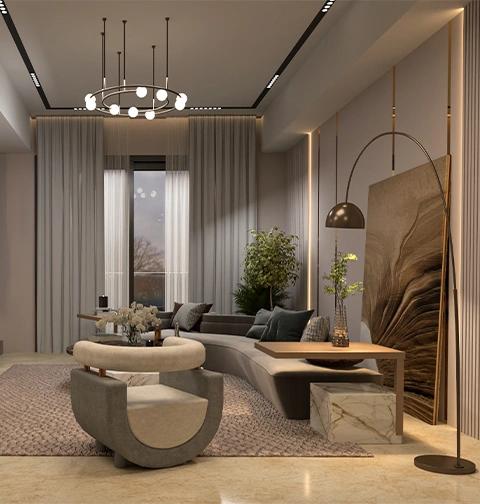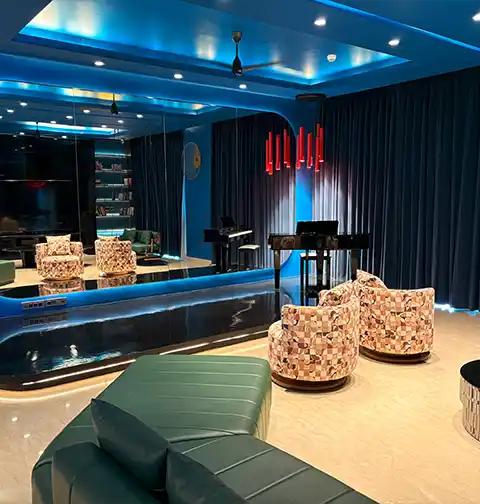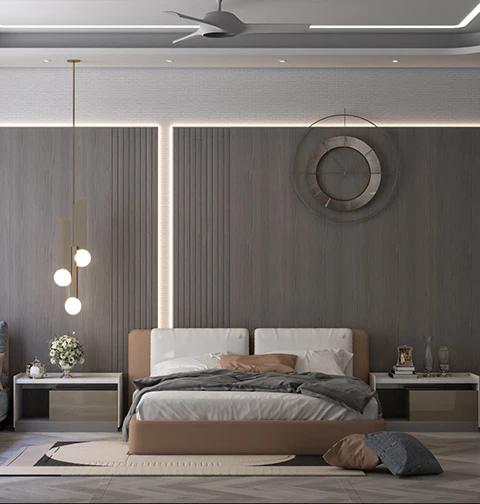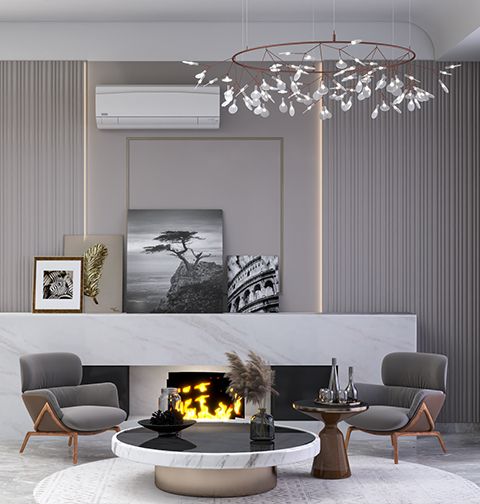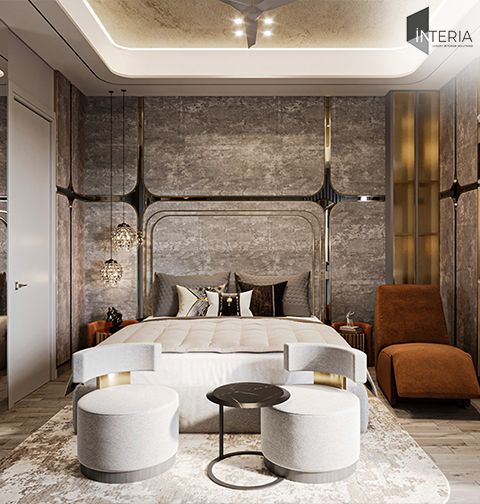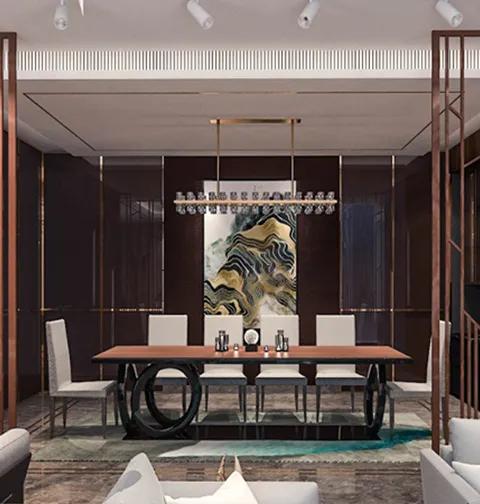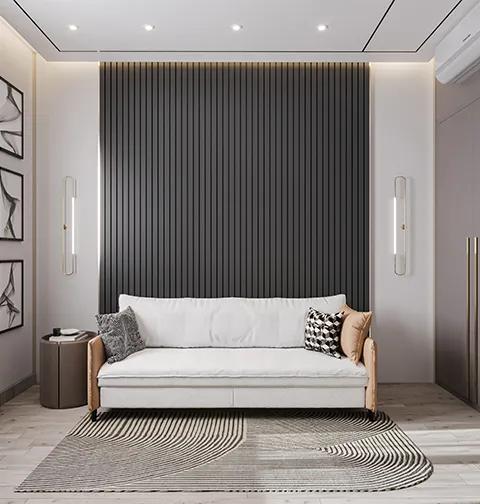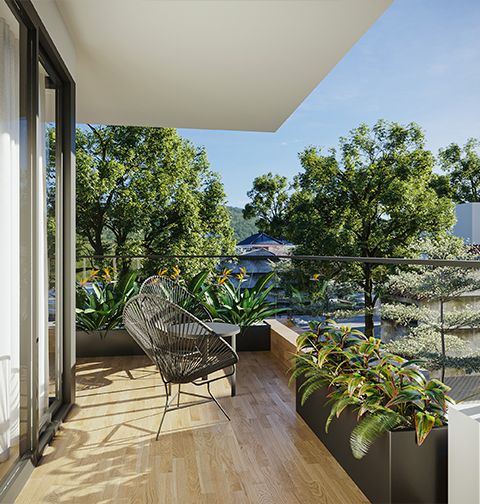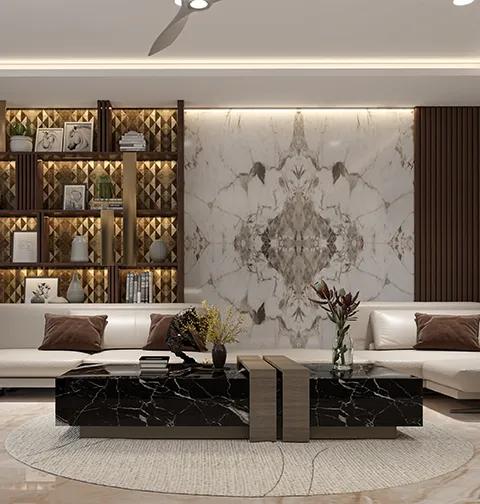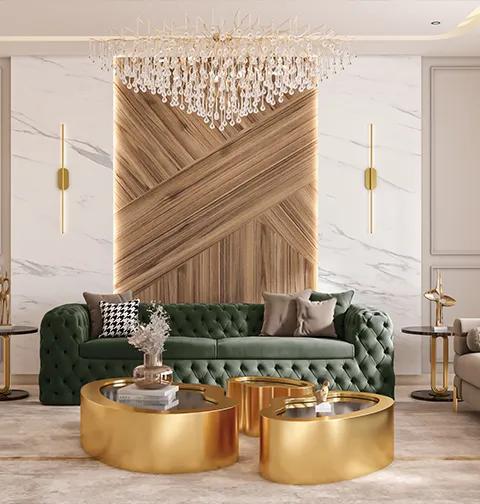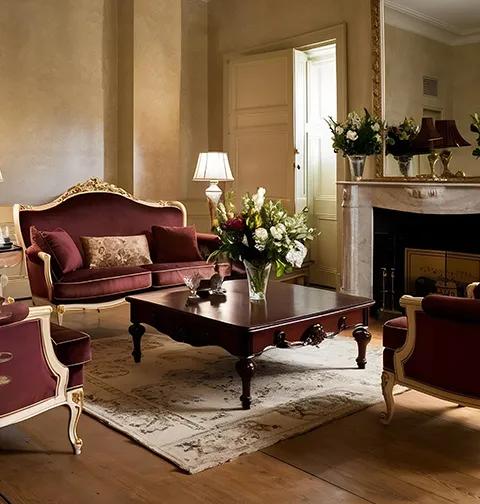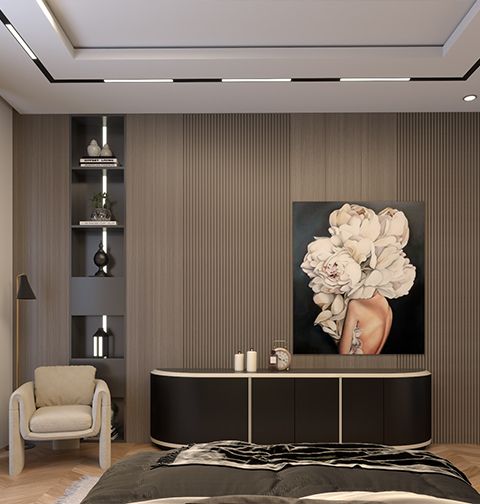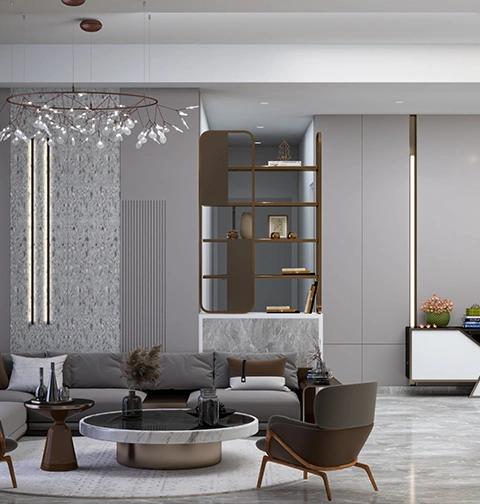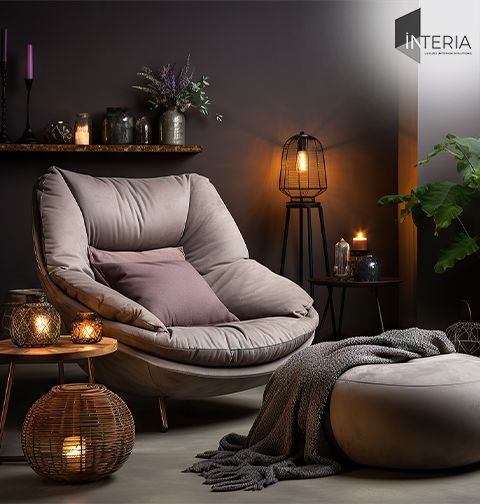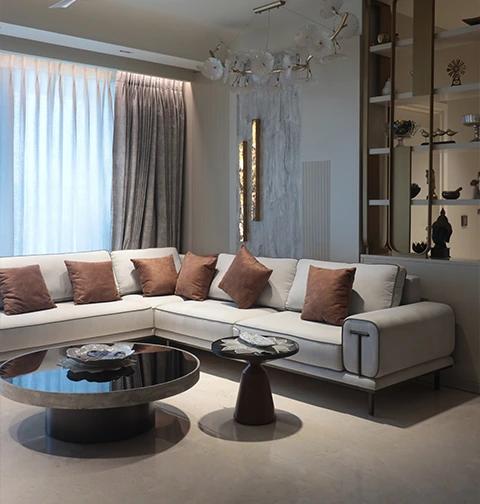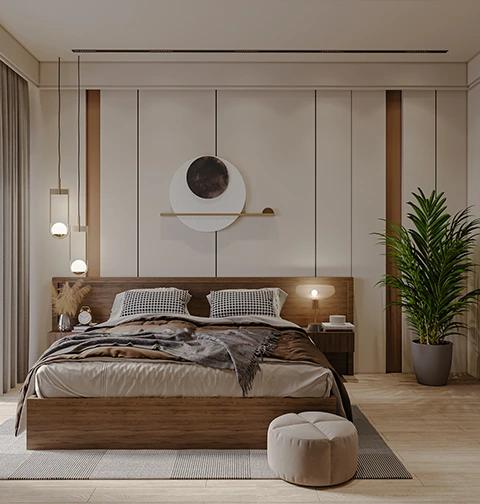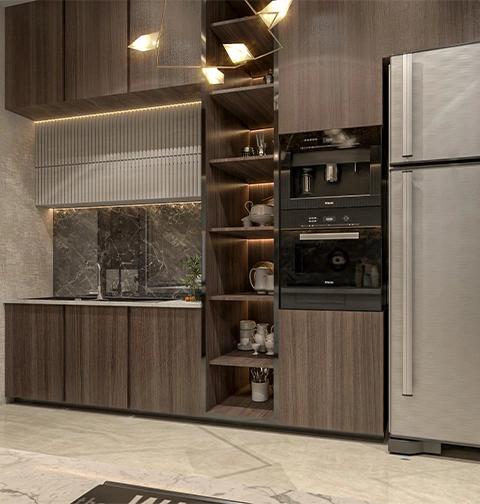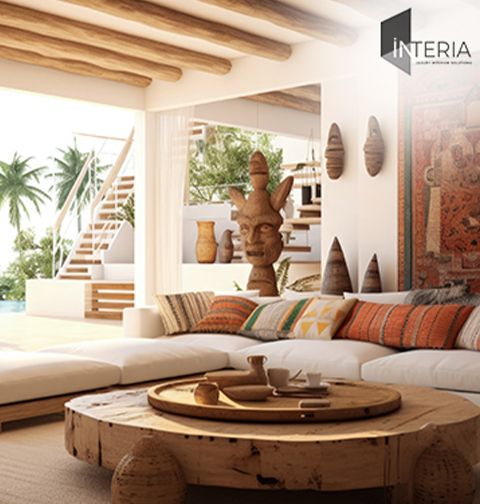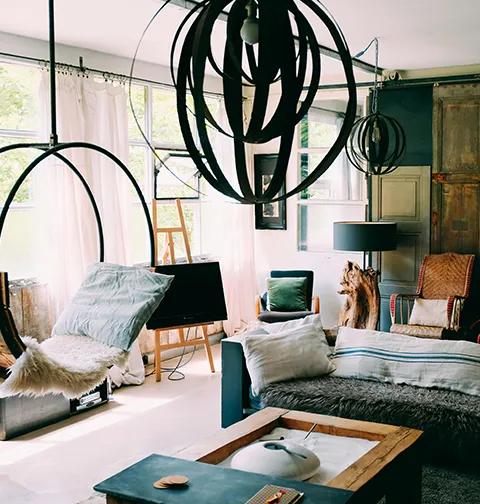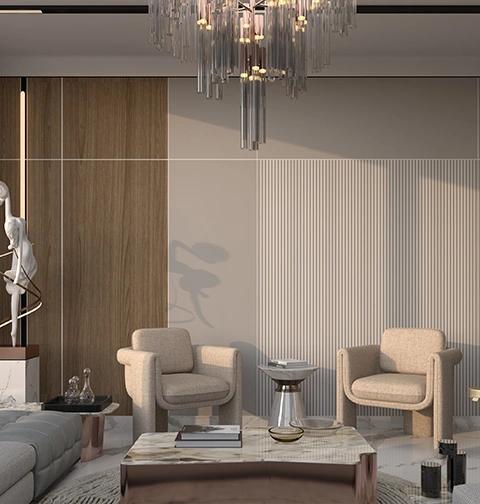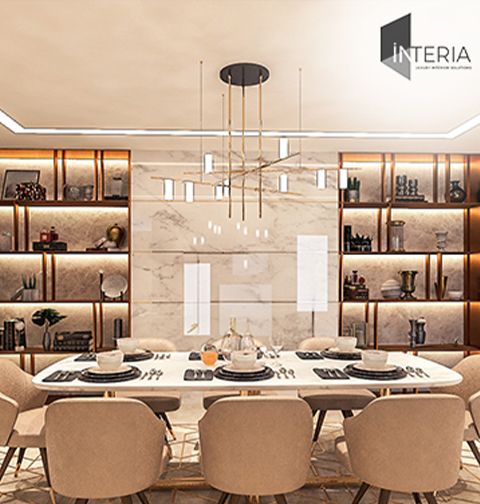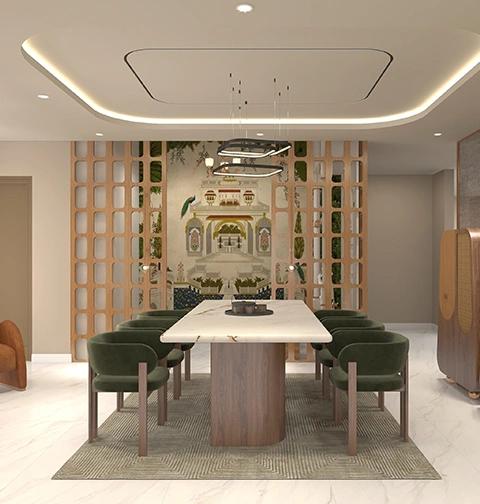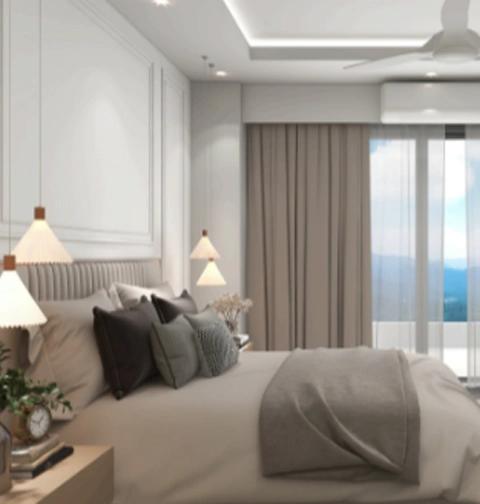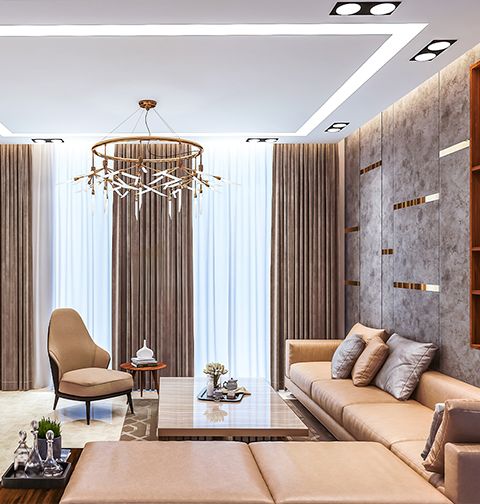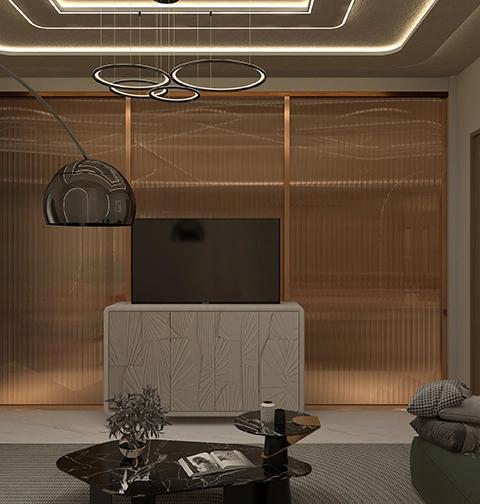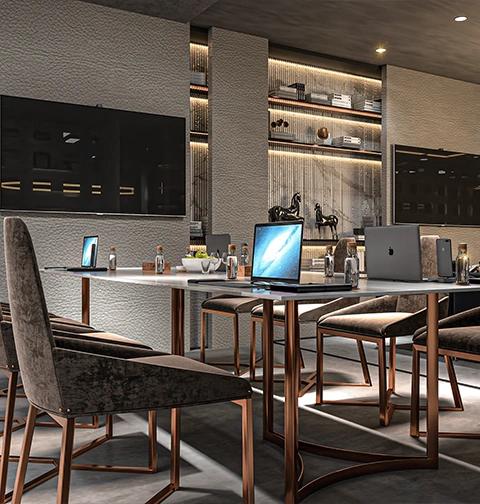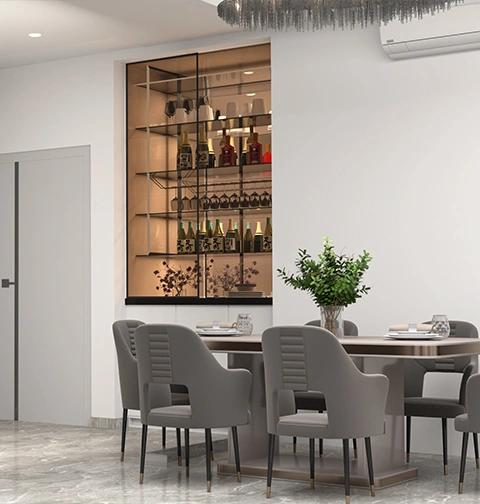
blog post
Porcelain Slabs vs. Natural Stone: Breaking Down Durability and Design for High-Traffic Areas
Flooring and surface materials are a decisive factor when it comes to the creation of interiors that are seamlessly blended to be luxurious, perform well, and be practical. The inappropriate choice of materials in high-traffic areas - such as lobbies, hallways, kitchens, and commercial areas - can easily transform the beautiful design into a nightmare of maintenance. Natural stone and porcelain slabs are the two most popular competitors for such spaces. They are both sophisticated and elegant, but theories are different when they are put to practice in real-life wear and tear.
Being one of the finest interior designers in Gurgaon, Interia has extensively worked with the two materials. Our design philosophy lies in the combination of beauty with functionality on a long-term scale. In this blog, we will dissect the comparison of porcelain slabs and natural stone concerning durability, design flexibility, and general value- helping you to make a sound decision about the next interior project.
Understanding Porcelain Slabs and Natural Stone Through the Eyes of the Top Interior Designer in Gurgaon
1. Getting to Know the Materials
To compare them, it is necessary to know the peculiarities of these materials.
Natural Stone: Natural Stone, such as marble, granite, and limestone, is a natural product consisting of something excavated right out of the ground. The slabs are different in texture, veining, and color. Natural stone is beautiful because of its flaws, which give depth and uniqueness to a space. But it also comes with the price of care since it is porous and can easily be scratched or even stained, otherwise sealed and taken care of.
Porcelain Slabs: On the other hand, Porcelain Slabs are produced based on refined clay and natural minerals at very high temperatures. This production process produces a non-porous and very tough surface that is not prone to moisture, scratches, or heat. State-of-the-art porcelain technology has even been able to imitate the natural veining of marble or granite and present it with the same look at a higher degree of consistency and durability.
At Interia, we tend to inform our clients that porcelain is not a substitute for stone but rather an evolution. It has given it the chance to be creative without the need to sacrifice durability and aesthetics.
2. Durability: Why Does one Last Longer?
Durability is an important consideration for any busy place. Be it a busy office hallway or a posh kitchen floor, the material has to resist constant movement, impact, and cleaning.
Natural Stone:
Although granite and quartzite are known to be strong, the weaker types, such as marble or limestone, are likely to be worn out due to the continuous movements of people. They have to be sealed frequently to avoid staining and etching by spills or chemicals. Marks may be left by heavy furniture or by sharp heels, and restoration may include polishing or re-surfacing.
Porcelain Slabs:
Porcelain is almost resistant to scratches, stains, and water. It does not need sealing, and it can comfortably withstand years of use without fading away. It is also non-porous, therefore it does not hold liquids, hence it is suited in the kitchen, bathroom, and the common area.
Conclusion: In case long-term resilience and minimum maintenance are of the essence, porcelain is the clear winner. Interia usually suggests the use of porcelain in the interiors of corporations or hotels where the service cannot be compromised.
3. Design Flexibility: Creative Intersection with Practicality
Design flexibility is able to transform the feel of a space entirely. That is where both materials shine, though in different aspects.
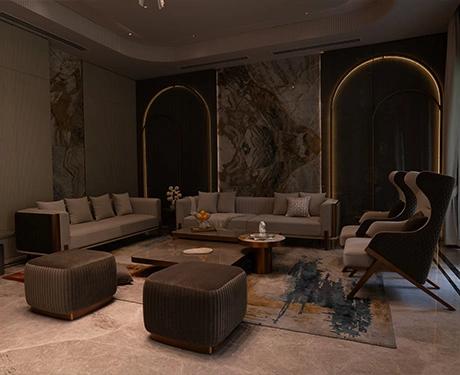

Natural Stone:
Every piece of natural stone tells a lot of tales. The special veiling, texture, and color differences can uplift the interiors to the level of organic luxury. Stone is a classic and modern collection that fits perfectly into the environment, particularly countertops, wall claddings, or flooring in the statement points. But as every work is unique, it may be hard to have the same appearance as large spaces.
Porcelain Slabs:
The current porcelain tiles are available in a wide variety of colors, designs, and finishes to imitate rare marble up to oxidized metal, and concrete. Porcelain offers consistency unlike stone, which is suitable for big projects such as hotels or retail areas. It can also be easily installed on the walls, floors, and even on furniture surfaces because it is in a thin format.
Our design professionals at Interia usually mix the two, whereby we have porcelain in high traffic spots to ensure it serves its purpose, but we have natural stone in the centre points so as to add warmth and personality. This is a synthesis that provides the optimal solution.
4. Maintenance and Longevity
The ultimate beauty of a surface is determined in the long run by maintenance.
Natural Stone:
To preserve the resistance to stains and moisture, regular sealing is necessary to ensure that the stone maintains its resistance. As an example, marble is sensitive to acidic elements such as vinegar or lemon and creates dull spots. Cleaning using pH-neutral products every day is beneficial, but the natural stone requires some professional services every now and then to regain its shine.
Porcelain Slabs:
Porcelain needs very little maintenance. It is maintained with a mere mop and some detergent. It does not need a sealant, is highly resistant to most cleaning agents, and lasts the years in its finish. Porcelain works very well even in commercial setups with heavy cleaning schedules.
Interia usually recommends porcelain slabs to homeowners and businesses that require install-and-forget materials. They are a convenient yet fashionable option due to their low maintenance.
5. Sustainability and the Eco-Friendliness
The concept of sustainability has played a major role in contemporary interior design choices.
Natural Stone:
Natural, however, stone extraction is associated with quarrying, which has environmental effects. The transfer of heavy slabs across nations contributes to the carbon footprint. Nevertheless, in the local case, stone is a stable, long-term material that can be reused with the passage of time.
Porcelain Slabs:
The porcelain is produced out of natural resources and energy-efficient production methods. New brands of porcelain tiles have been eco-certified, and they contain recycled materials. Porcelain is also very sustainable in terms of its longevity, as it takes decades to replace, thus scoring high on life-cycle.
In Interia, our design team is very fussy about the materials they choose, which are of ethical and responsible origin. Porcelain tends to become a favorite among environmentally conscious customers based on its sustainability and eco-friendliness.
6. Cost and Value: Beneath the Price Tag
The final decision can be a matter of cost, although value must be the determining factor.
Natural Stone:
Premium marble and granite may be costly, not necessarily in price, but also in both installation and maintenance. It is luxurious and therefore increases the value of the property, but the costs of maintenance may run up.
Porcelain Slabs:
Porcelain provides the same premium look at a lower price range. Its robustness limits the number of repairs or replacements, hence it is cost-effective in the long run.
When it comes to design investment, Interia assists clients in looking past the upfront expense, selecting materials that strike the right balance between beauty and utility and benefit over the years of service.
7. Where Each Works Best
Porcelain slabs should be used in:
- Kitchens and bathrooms
- Lobbies and corridors in the office.
- Hospitality and flooring at retail.
- Outdoor patios and terraces
Natural stone would be great in:
- Reception areas and feature walls.
- Countertops and vanities are high-end.
- Flooring with special designs.
In the case of Interia, the design strategy would be selecting materials on a project-by-project basis. We examine the usage of a space and suggest combinations that would last and would not spoil its beauty.
8. The Interia Edge: Beauty and Practicality
The thing that makes Interia stand out among the top interior designers in Gurgaon is the attention to detail. We do not simply choose materials following the trends but learn the lifestyle, the traffic flow, light, and climate so that each of our choices would be practical and eternal. Regardless of the type of property we are working on, be it a luxury house or a busy commercial area, we always aim at striking the right balance between beauty and wearability.
The decision between porcelain slabs and natural stone ultimately depends on your priorities. If you’re drawn to organic charm and individuality, natural stone offers unmatched character. But if you seek durability, consistency, and ease of maintenance—especially for high-traffic areas—porcelain emerges as the smarter, long-term choice.
At Interia, we help clients navigate these choices with expertise and precision, ensuring every surface tells a story of refined craftsmanship and thoughtful design.
Build with Confidence, Design with Interia
Looking to design a home or commercial space that stands the test of time? Partner with Interia, the most trusted interior designer in Gurgaon. Our experts combine artistry, innovation, and material intelligence to create interiors that are as resilient as they are beautiful.
Visit our website or book a consultation today to explore how we can transform your space into a masterpiece of design and durability.


